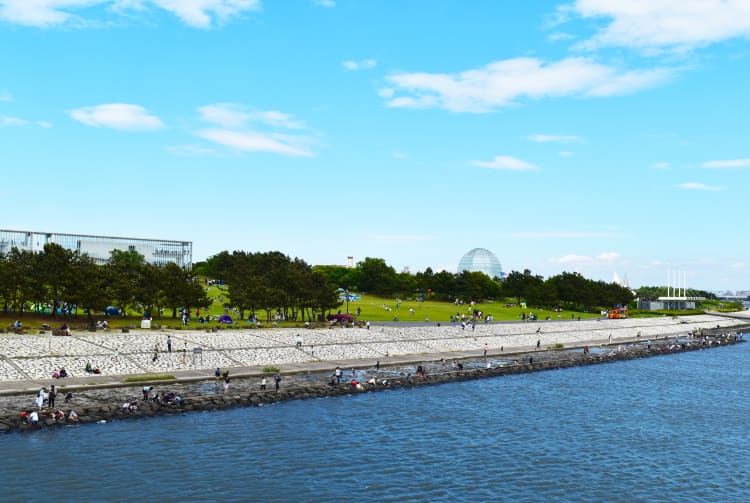An oasis of calm in Tokyo
Less busy than the parks in Ueno and Yoyogi , Tokyo's second-largest public park has several family-friendly attractions and is a great place to relax. Go birdwatching, have a barbecue, and take a ride on the Ferris wheel or the park train.
Along with Odaiba , Kasai Rinkai Park is also one of the few places in Tokyo where you can freely venture down to the seashore. Thanks to careful conservation efforts, marine life is beginning to return the area.
Don't Miss
- Sea Life Park Aquarium's impressive tuna tank
- Natural birdsong in the secluded wildlife sanctuary
- A chance to see Mt. Fuji from the Ferris wheel
How to Get There
Kasai Rinkai Park is easily accessible by train from Tokyo Station.
From Tokyo Station , take the Keiyo Line to Kasai Rinkai Koen, which stops right at the entrance of the park. Kasai Rinkai Park is also one of the stops for the Tokyo Water Bus, which travels between Asakusa, Odaiba and a few other stops.
Greenery, water, and people
Construction work began on the Kasai coastal development project in 1985, based on the concept of “greenery, water, and people” and aimed at preserving the natural environment of Tokyo.
Located right on Tokyo Bay, the park provides a breath of fresh air where you can enjoy the sound of waves and the sight of wide open skies. Since it first opened in 1989, the park has been popular with locals and tourists alike. Many attractions can be found in the surrounding area, including the world-famous Tokyo Disney Resort .

The Sea Life Park Aquarium
Located next to Tokyo Bay, the Sea Life Park aquarium fits right in with its surroundings.
The aquarium's glass dome is filled with a wide variety of fish and marine life found in the sea around Tokyo, as well as exhibits from around the world. One of the most popular attractions is the large penguin enclosure. The grounds around the aquarium recreate some of the natural streams and freshwater ponds that existed in Tokyo before its urbanization.

Panoramic views of the bay
Hop on the Ferris wheel for a bird's-eye view of the park. The second tallest Ferris wheel in Japan, one rotation takes more than 15 minutes, and on a clear day, you can see Mt. Fuji from the top.
The Ferris wheel is called the Diamond and Flowers Ferris wheel, referring to the spectacular light show it gives off after the sun goes down.
From there, consider a trip on the park train which will take you to all the main attractions.

Do a little birdwatching
The Sea Bird Sanctuary makes up one-third of the park's total area. Visitors can birdwatch and learn more about the local species that live there. Certain areas such as the marshland are restricted access to give the birds some human-free habitats.
There's an information center where you can learn more about the efforts to bring native birds back into the area.




Native flora and fauna
There are a considerable number of trees and shrubs growing in the park.
Japanese apricot, narcissus, silk tree, wax myrtle, black pine and cherry trees can all be found in the garden. The park's numerous cherry trees make it a particularly popular spot for hanami (cherry blossom viewing picnics) when the landscape is temporarily awash with delicate pink blossoms. This is a perfect time of year to pack a lunch and relax in the springtime sunshine by the sea.
Festivals and events
Look out for special events in the park throughout the year. Annual events include a spring birdwatching festival (to see sandpipers and plover), the wild bird photography exhibition, a summer Tanabata wish festival, a Narcissus festival and much more.

























































